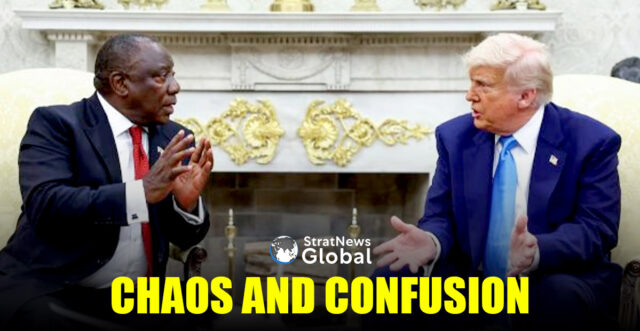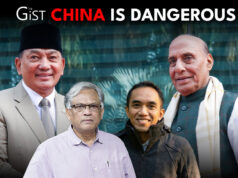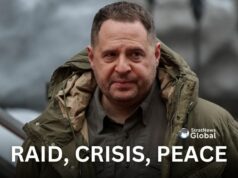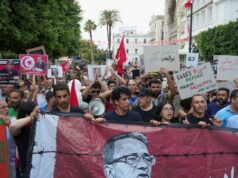Seeking clarity on a controversial US refugee policy, the top official at the US embassy in South Africa reached out to Washington in early July, asking whether non-white applicants could be considered under a programme primarily intended for white South Africans.
President Donald Trump’s February executive order establishing the programme specified that it was for “Afrikaners in South Africa who are victims of unjust racial discrimination,” referring to an ethnic group descended mostly from Dutch settlers.
Whites Only
In a diplomatic cable sent on 8 July, embassy Chargé d’Affaires David Greene asked whether the embassy could process claims from other minority groups claiming race-based discrimination, such as “coloured” South Africans who speak Afrikaans. In South Africa, the term coloured refers to mixed-race people, a classification created by the apartheid regime and still in use today.
The answer came back days later in an email from Spencer Chretien, the highest-ranking official in the State Department’s refugee and migration bureau, stating that the programme is intended for white people.
Reuters was unable to independently verify the precise language in the email, which was described to the news agency by three sources familiar with its contents.
The State Department, responding to a request for comment on 18 July, did not specifically comment on the email or the cable but described the scope of the policy as wider than the guidance in Chretien’s email.
The department said US policy is to consider both Afrikaners and other racial minorities for resettlement, echoing guidance posted on its website in May stating that applicants “must be of Afrikaner ethnicity or be a member of a racial minority in South Africa”.
Chretien declined to comment through a State Department spokesperson. Greene did not respond to Reuters’ requests for comment.
Confusion
The internal back-and-forth between the embassy and the State Department — which hasn’t been previously reported — illustrates the confusion over how to implement a policy designed to help white Afrikaners in a racially diverse country that includes mixed-race people who speak Afrikaans, as well as whites who speak English.
So far, the State Department has resettled 88 South Africans under the programme, including the initial group of 59 who arrived in May. Another 15 are expected to arrive by the end of August, one of the sources said.
Trump, a Republican who recaptured the White House pledging a wide-ranging immigration crackdown, placed an indefinite freeze on refugee admissions from around the world after taking office, stating that the US would only admit refugees who “can fully and appropriately assimilate”.
Weeks later, he issued an executive order that called for the US to resettle Afrikaners, describing them as victims of “violence against racially disfavored landowners,” allegations that echoed far-right claims but which have been contested by South Africa’s government.
Since the executive order, US diplomats working to implement the programme have been deliberating internally about which racial groups could be considered eligible, one of the sources said.
In the 8 July cable, Greene laid out a summary of the different ethnic and racial groups in the country before seeking guidance on eligibility. In addition to Afrikaners and mixed-race South Africans, Greene mentioned indigenous South Africans known as the Khoisan people.
He said that members of the Jewish community had also expressed interest, but that in South Africa they are considered a religious minority and not a racial group.
“In the absence of other guidance, [the US embassy] intends to give consideration to well-founded claims of persecution based on race for other racial minorities,” Greene wrote.
At least one family identified as coloured has already travelled to the US as refugees, two people familiar with the matter said.
The cable forced the administration to clarify its position on whether the policy is for whites only, and if it does include other aggrieved minorities, who would qualify, two of the people familiar with the matter said.
Chretien, a conservative who wrote op-eds promoting the Heritage Foundation’s “Project 2025” plan to overhaul the federal government, is the senior official at the State Department’s Bureau of Population, Refugees, and Migration.
Apartheid And Race Distribution
During the apartheid era, which ended with the first democratic elections in 1994, South Africa maintained a racially segregated society with separate schools, neighbourhoods and public facilities for people classified as Black, coloured, white or Asian.
Blacks make up 81% of South Africa’s population, according to 2022 census data. Coloured South Africans make up 8%, and Indians 3%. Afrikaners and other white South Africans constitute 7% of the population but own three-quarters of the privately held land in the country.
Trump Downplays Preferential Treatment
When asked about the programme in May, Trump said he was not giving Afrikaners preferential treatment because they are white.
“They happen to be white, but whether they are white or Black makes no difference to me,” he said.
In response to a request for comment, a White House official said the administration’s policy reflected Trump’s executive order.
“We will prioritise refugee admissions for South African citizens, including Afrikaners and other racial minorities in South Africa, who have been targeted by the discriminatory laws of the South African government,” the official said.
The assertion that minority white South Africans face discrimination from the Black majority has spread in far-right circles for years and been echoed by white South African-born Elon Musk, a US citizen who served as a top White House aide during the first four months of Trump’s administration.
The South African government has rejected the allegations of persecution and a “white genocide.” There is no evidence to back up claims of widespread, race-based attacks in the country.
During a combative Oval Office meeting with South African President Cyril Ramaphosa in May, Trump showed a printed image of a Reuters video taken in the Democratic Republic of Congo as part of what he falsely presented as evidence of mass killings of white South Africans.
The South African Chamber of Commerce said earlier this year that 67,000 people were interested in the programme.
(With inputs from Reuters)





